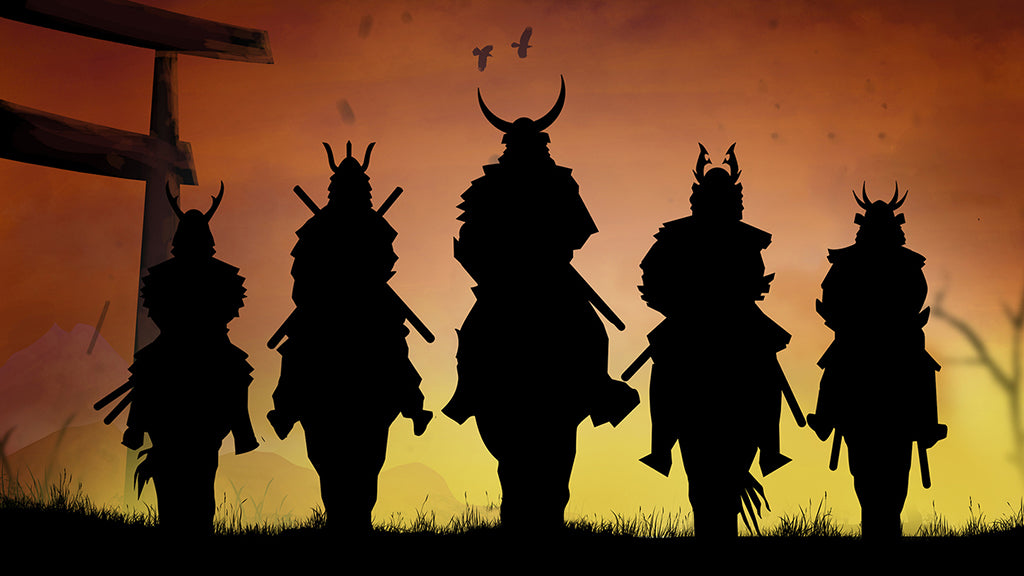Japanese Sword: Power and Beauty in Blade Light and Sword

The Japanese sword enjoys a great reputation in the world and is highly valuable both as weapons and works of art. If you have any interest in Japanese culture, you will find that the Japanese sword plays an important role in Japanese literature, movies, anime or games. However, many viewers may have only a general impression of the Japanese sword itself. What is the Odachi sword? And what does the Yobiha stand for?
What we usually called the Japanese sword is a general term for a type of sword forged by using the unique Japanese method of forging. The name of "Japanese swords" was not invented in Japan, it was introduced from the other country, and the names of different kinds of swords were directly used in Japan before the late modern times.
From the Japan Kofun Period (mid-3rd century to 7th century), the development of iron forging technology and weapons in Japan began to accelerate, and the foundation of various weapons was laid during this period, which included swords, spears, arrows, armor, shields and so on. Japanese weapons in this period had styles introduced from mainland China and the Korean Peninsula, which were different from previous weapons that had distinctly Japanese characters. There are scholars theorize that swords in the Kofun Period played an important role in symbolic rituals in addition to their powerful function as weapons. At that time, the extravagant outer garment of the sword was considered to symbolize the ruling power, and such a sword could be used for religious activities such as sacrifice, or could only be worn by the authorities who commanded battles.

1. One of the main features of Japanese swords is the curvature of the blade
Whether it is the tip or the whole blade, the shape of Japanese swords is based on the circle, and the blade body is curved, which is mainly caused by the collocation of steel and the changes caused by quenching. However, the scimitar shape of Japanese swords was also evolved from the straight katana sword. In ancient times, the sword was not reversed, it was the straight katana sword, which could only be used to strike, but could not be used to cut like a scimitar. For example, the gold and copper Hwandudaedo (Omura Jinja treasured) in the end of the Kofun period, the Venustas and Seven Star Sword (Shitennouji treasured) in the Asuka period, the straight katana sword in the Nara period treasured in Shosoin and so on are the representative of this kind of straight swords handed down from generation to generation.
The Koshira (Exterior) of swords in the Nara period inherited the former Hwandudaedo and Kabusuchinotachi from the appearance. On the one hand, it is believed that the Tang broadsword that is now housed in Shosoin was introduced from China, and on the other hand, there is a record of "Tang-style Broadsword" in the gift account in Shosoin, which is believed to be a Japanese sword imitating the style of the Tang broadsword. The exterior of the Tang broadsword in Shosoin is richly decorated, so it is generally believed that it was not used as a practical weapon at that time, but had a ceremonial function or as a symbol of rank and status.

Hand Forged Japanese Samurai Katana Sword Smelted Steel Blade Clay Tempered Iron Tsuba - COOLKATANA
2. The more popular knife was still the straight katana sword in the early to middle Heian period
After that, the curve and cross section of the blade changed, and the straight katana sword began to change to the scimitar. The specific time of this change is uncertain, there is no doubt that it took a long time, the transition from a straight katana sword to a scimitar can also be seen in some surviving swords. The Toukou Amakuni is said to be the ancestor of Japanese knife workers. The Kogarasumaru forged by Heike family in Amakuni has the characteristics of the evolution from straight katana swords to scimitars.

In the late Heian Period, with the rise of the Samurai family and the expansion of the samurai class power, wars began to become frequent, and accompanied by the change of weapons. In order to adapt to the way of war at that time, the shape and performance of swords have changed accordingly. Odachi swords as scimitars thus appeared on the stage of history. The Odachi sword suitable for chopping was more advantageous when fighting on horseback and became the mainstream at that time.
